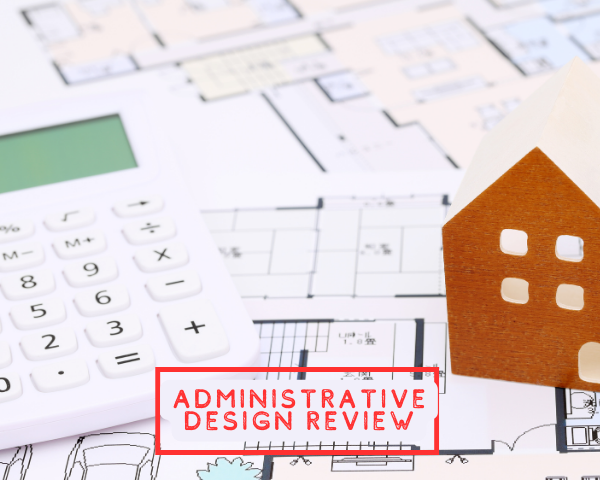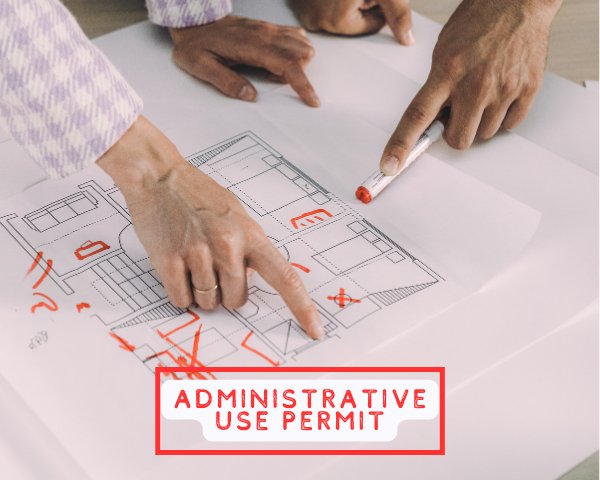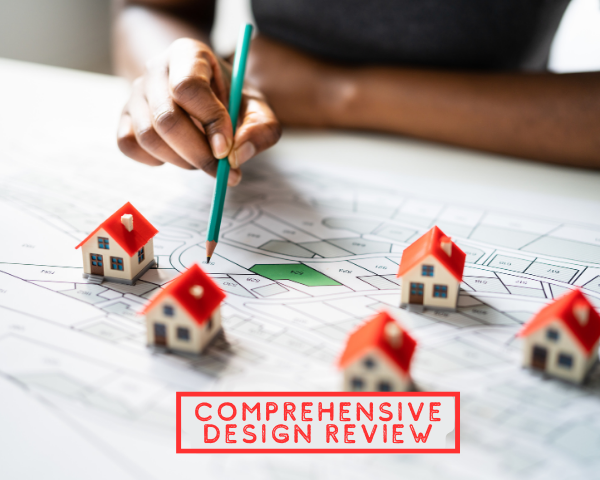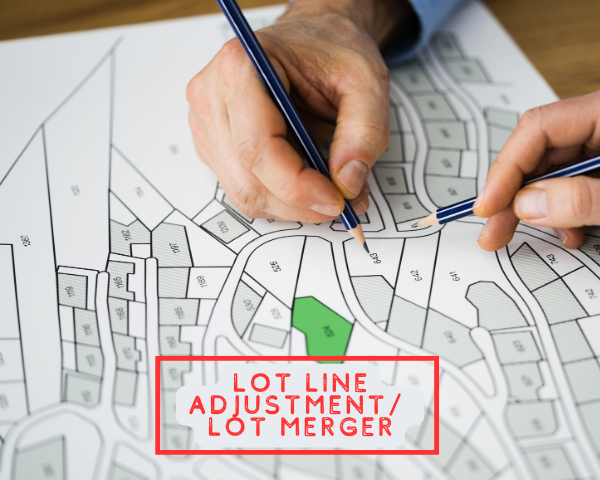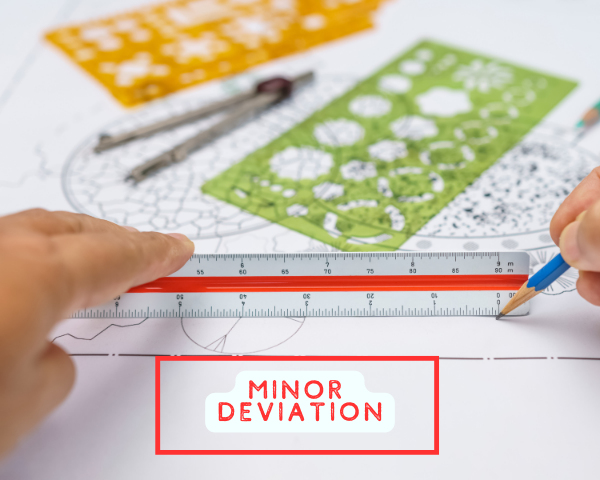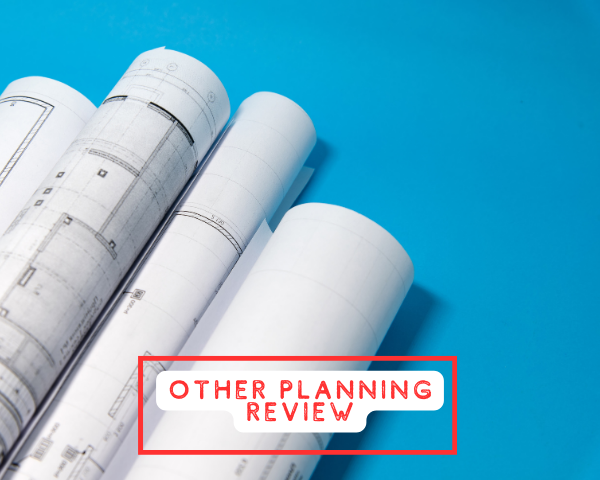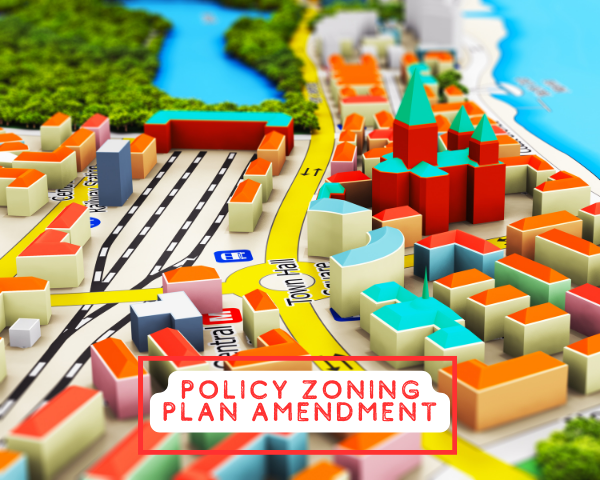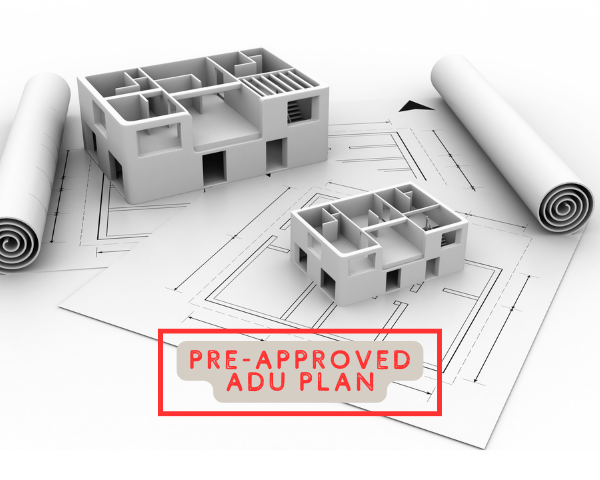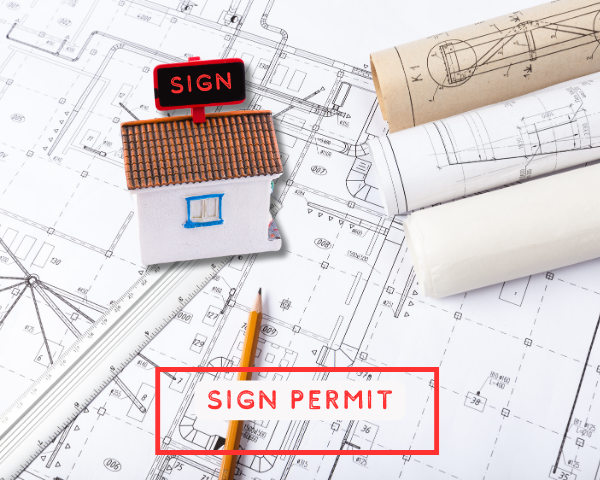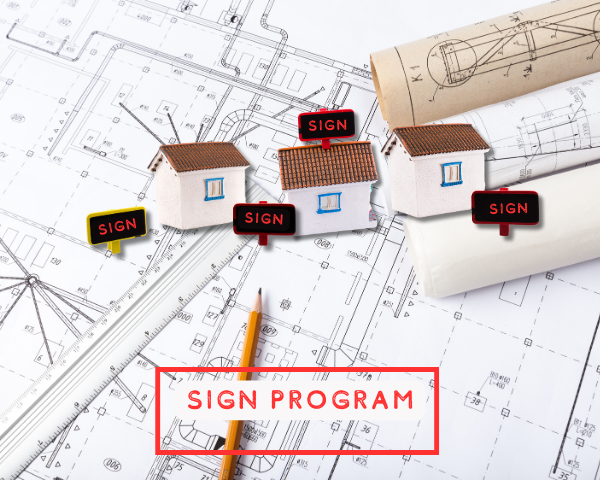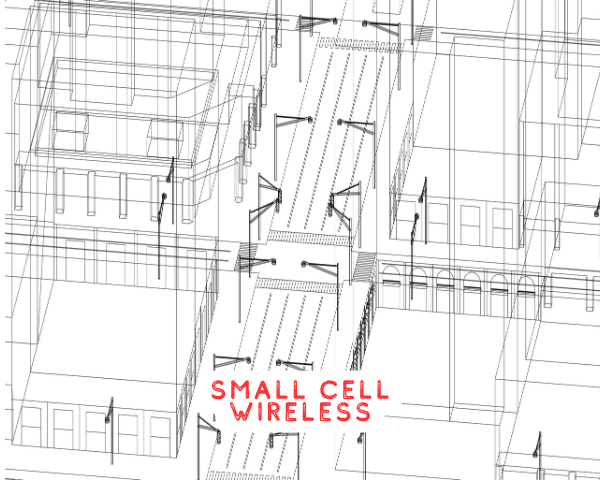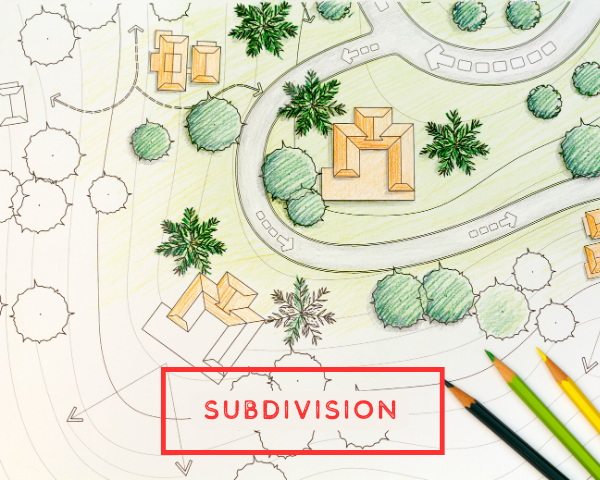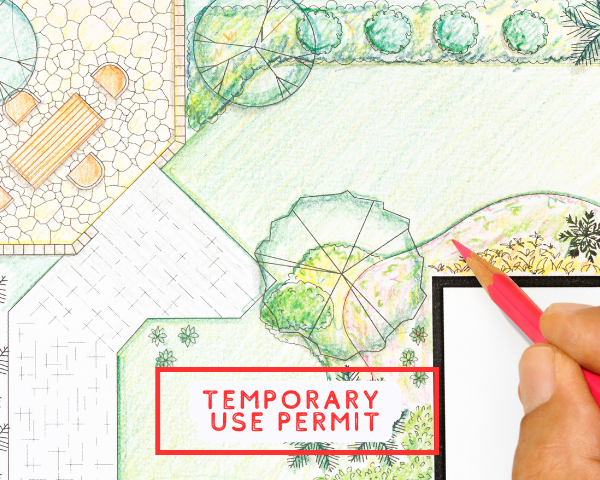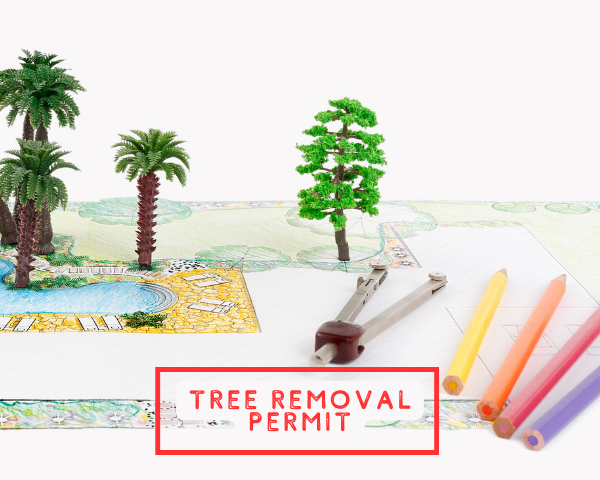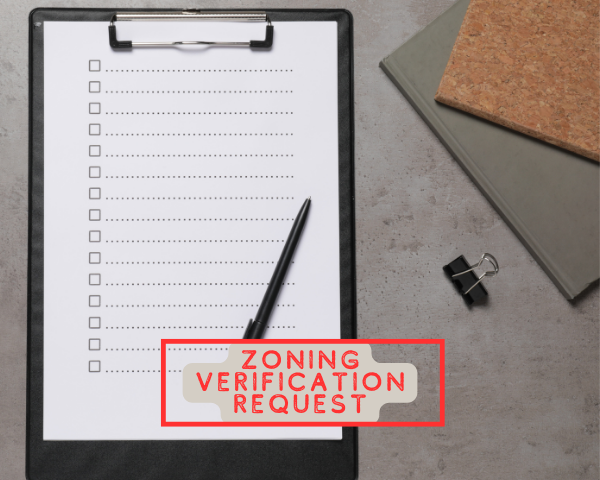Planning Permit Information

This page offers information on:
- Types of planning projects needed for various activities
- Checklists, forms, and guidelines
- Site planning and specific land use standards
- Frequently Asked Questions
- Planning Project Types
- Checklists, Forms and Guidelines
- Site Planning & Land Use Standards
- Frequently Asked Questions
Planning Project Types For eTRAKiT
Planning permits vary based on the type of project you’re considering. Before applying, identify the permit you need and gather the necessary materials. Below is a list of common projects. Click on the project you are interested in to find out which permit you need in eTRAKiT and what documents are required.
Accessory Dwelling Units (ADUs) and Junior ADUs
Building an ADU or JADU on your property is a great way to create additional living space, rental income, or housing for loved ones. Below are the detailed requirements and guidelines to help you navigate the process.
Pre-Approved ADU Plans Program
The City of Pinole, in alignment with Assembly Bill 1332 (AB 1332), is committed to supporting streamlined and efficient Accessory Dwelling Unit (ADU) development. AB 1332 allows any person to submit ADU plans for pre-approval to simplify the permitting process and make compliant, ready-to-use designs available to homeowners.
Pre-approved plans ensure compliance with both state law and local development standards while providing a resource for homeowners to develop ADUs efficiently and cost-effectively. By offering a pathway for pre-approved designs, this program supports the creation of accessible, affordable housing options and helps designers connect with the community.
This section provides clear guidance for:
- Designers submitting plans for pre-approval consideration.
- Designers and applicants using pre-approved plans to apply for a Building Permit.
Through this program, the City aims to streamline ADU development, promote compliance with the California Building Code, and foster housing opportunities in a manner that is consistent with local zoning requirements.
Submitting ADU Plans for Pre-Approval
Prepare Your Plans
Your plan set must include the following:
- Floor Plan: Clearly label all rooms and uses.
- Elevations: Show all sides of the ADU, including height measurements.
- Roof Plan: Include slope, materials, and drainage details.
- Electrical Plans: Layout of outlets, lights, and wiring schematics.
- Structural Details: Construction details for foundations, framing, and materials.
Requirements:
-
- Plans must comply with the latest edition of the California Building Code.
- Plans must align with City of Pinole ADU Development Standards (e.g., setbacks, height, parking).
- The complete plan set must be compiled into a single PDF file.
Submit Your Application Online
- Go to the City’s Online Permitting and Licensing System.
- Click on the “Planning Permits” tab and follow the link to apply.
- Apply for a “Pre-Approved ADU Plan” under “Planning Permits”:
- Select location: 2131 PEAR ST – PARCEL.
- Upload your complete PDF plan set.
- Pay the required application fee, which at a minimum:
- Includes 2 hours for Planning Division review.
- Includes 1 hour for Building Division compliance review.
Plan Review Process
- Plans will be reviewed for:
- Building Code compliance.
- Compliance with ADU Development Standards in the Pinole Municipal Code.
- If revisions are needed:
- You will receive comments specifying required updates.
- Address all comments and submit a response document detailing how each comment was resolved.
- Resubmissions may be required until all issues are addressed.
Timeline:
- The City has 60 days to approve or deny a complete application.
Approval and Listing on City Website
Once your plans are approved:
- Complete the City of Pinole ADU Pre-Approval Plan Release Form.
- Planning Staff will coordinate with you to finalize details for your listing, including:
- Contact information.
- Plan description.
- Renderings or partial/full plans for display.
- Important Note: Listing your plans on the website is not an endorsement of your services or designs, per AB 1332.
Steps to Use Pre-Approved Plans for a Building Permit
Contact the Designer
- Review the City’s list of pre-approved ADU plans on the website.
- Reach out to the designer or preparer of the selected plan to:
- Acquire, purchase, or obtain permission to use the plans.
- Discuss any modifications or site-specific adjustments needed.
Note: The City is not a party to any discussions, agreements, or transactions between designers and applicants regarding the use of pre-approved plans.
Prepare a Full Plan Set
After acquiring the plans, ensure you prepare a complete plan set for submittal, which includes:
- Pre-approved plans: Floor plans, elevations, roof plans, and structural details.
- Site Plan: Must demonstrate compliance with development standards in Pinole Municipal Code (Chapter 17.70).
- Include:
- Lot lines, setbacks, and building footprints.
- Roof overhangs, fences, and eaves.
- Parking spaces, driveways, and utility line locations.
- Right-of-way features (sidewalks, trees, landscaped areas).
- North arrow and scale bar.
- Include:
Accuracy: The applicant must verify property lines and structure locations on the site plan.
Submit the Building Permit Application
- Visit the Online Permitting Center.
- Submit the Building Permit application with:
- The full plan set (pre-approved plans + site plan).
- Address Assignment Application:
- Required for each ADU/JADU. Find the form under Planning Permits > Address Assignment.
- ADU Development Restriction Form:
- Download at ADU Forms & Checklists.
- Must be notarized and submitted via mail/drop-off:
Community Development Department, 2131 Pear Street, Pinole, CA 94564.
- Sewer Lateral Compliance:
- Submit a sewer video or certificate from the Pinole Public Works Department.
Review and Approval
- The City will review your application for completeness and compliance.
- You will be notified of approval or required changes.
- The City has 30 days to approve or deny a complete application.
Frequently Asked Questions
What is a Pre-Approved ADU Plan?

A pre-approved ADU plan is a set of architectural plans for accessory dwelling units (ADUs) submitted by designers for review and approval under California Assembly Bill (AB) 1332. These plans are reviewed for compliance with zoning and building code standards. Once approved, the plans can be listed on the City’s website for use by others. Applicants are also required to sign a City of Pinole ADU Preapproval Plan Release Form before their plans can be published.
What documents are required for submission FOR pre-approved ADU plan review?

At minimum, plans must include:
- Floor plan
- Elevations showing all sides of the ADU
- Roof plan
- Electrical plans
- Structural details
Plans must be compiled into a single PDF file and adhere to the latest California Building Code and the City’s ADU development standards.
How do I apply for pre-approved ADU plan review?

Follow these steps:
- Go to the Online Permitting and Licensing Center.
- Click on the “Planning Permits” tab and proceed to eTRAKiT.
- Select “Planning Permit” and then “Pre-Approved ADU Plan” as the project type.
- Upload the plan set as a single PDF file.
- Pay the required application fee online.
What is the fee for submitting a pre-approved ADU plan?

The application fee covers two hours of Planning Division review and one hour of Building Division review. Additional plan check fees may apply if further reviews or resubmittals are required.
Will my Pre-Approved ADU plans need to be updated for future building code changes?

Yes. Approved plans must be resubmitted for plan check with each new Building Code cycle (e.g., 2025 CBC updates) to remain compliant. Additional fees will apply.
How are pre-approved ADU plans listed on the city’s website?

Once approved, the City will work with you to finalize listing details, which may include:
- Contact information
- Plan description
- Renderings or sample plans
You will also need to complete and submit the City of Pinole ADU Preapproval Plan Release Form before the listing is published. Please note: Posting does not constitute an endorsement of the plans or designer.
Can I update or remove my Pre-Approved ADU Plan listing?

Yes. Contact the Planning Division to request updates or to remove your listing. Plans will be removed within 30 days of confirmation.
Pre-Approved Plan Repository
This repository will be developed as pre-approved ADU plans are submitted and approved.
ADU Fast Track Program
Coming soon!
The City’s Housing Element Program 4 includes a process to fast-track ADU applications through plan check by moving them to the top of the queue and reducing plan check turnaround times. Stay tuned for more information in early 2025!

ADU One-Stop-Shop
Coming soon!
Since 2017, the City has established a one-step process for ADU development, requiring only a building permit submittal which is routed to multiple departments for review and approval. The one-step process addresses all approvals necessary for building permits in less than 12 weeks. There will be a single point of contact for ADU applications. Stay tuned for more information in early 2025!

SB 9 Units
Information coming soon!
This section provides resources for Planning Applications.
Accessory Dwelling Units
Design Guidelines
 Residential Design Guidelines
Residential Design Guidelines
 Old Town Design Guidelines (see Map1 on page 3 for applicable areas)
Old Town Design Guidelines (see Map1 on page 3 for applicable areas)
 Three Corridors Specific Plan Design Guidelines: Chapter 6: Development Standards
Three Corridors Specific Plan Design Guidelines: Chapter 6: Development Standards
 Three Corridors Specific Plan Design Guidelines: Chapter 7: Private Realm Design Guidelines
Three Corridors Specific Plan Design Guidelines: Chapter 7: Private Realm Design Guidelines
 Three Corridors Specific Plan Design Guidelines: Chapter 8: Public Realm Standards and Design Guidelines
Three Corridors Specific Plan Design Guidelines: Chapter 8: Public Realm Standards and Design Guidelines
 Learn about the Specific Plan
Learn about the Specific Plan
SB 9 Unit Development and Urban Lot Split
Subdivisions/Lot Mergers
Landscaping
Site Planning and Specific Plan Standards
The following site planning and specific land use standards are regulated by the Pinole Municipal Code (PMC). See the City’s Specific Plan for other relevant site planning and specific land use standards that might be applicable.
Accessory Dwelling Units
Accessory Dwelling Units are regulated by PMC §17.70
Accessory Structures
Accessory Structures are regulated by PMC§17.30
Adult Entertainment Businesses
Adult Entertainment Businesses are regulated by PMC §17.58
Alcohol Sales
Alcohol Sales are regulated by PMC §17.59
Affordable Housing
Affordable Housing Requirements are regulated by PMC §17.32
Automobile Service Stations
Automobile Service Stations are regulated by PMC §17.34
Building Height
Building Height Measurement and Projections are regulated by PMC §17.36
Condominiums
Condominium projects are regulated by PMC §17.60
Density Bonus
Density Bonus projects are regulated by PMC §17.38 and California Gov. Code §§65915 – 65918.
Drive-In and Drive-Through
Drive-In and Drive-Through Facilities are regulated by PMC §17.40
Emergency Shelters
Emergency Shelters are regulated by PMC §17.62
Fences, Walls and Screening
Fences, Walls and Screening are regulated by PMC §17.42
Firearm Sales
Firearm Sales are regulated by PMC §17.63
Home Occupations
Home Occupations are regulated by PMC §17.64
Integrated Developments
Integrated Developments on multiple parcels and/or in multiple buildings are regulated by PMC §17.43
Junior Accessory Dwelling Units
Junior Accessory Dwelling Units are regulated by PMC §17.70
Landscaping
Landscaping is regulated by PMC §17.44
Lighting
Lighting is regulated by PMC §17.46
Massage Therapy
Massage Therapy is regulated by PMC §17.66
Outdoor Sales, Display, Storage, and Outdoor Seating
Outdoor Sales, Display, Storage, and Outdoor Seating are regulated by PMC §17.68
Parking and Loading Requirements
Parking and Loading Requirements are regulated by PMC §17.48
Property and Utility Improvement
Property and Utility Improvement are regulated by PMC §17.50
Signs
Signs are regulated by PMC §17.52
Signs on City Property
Signs on City Property are regulated by PMC §17.54
Small Wireless Communications Facilities
Small Wireless Communications Facilities are regulated by PMC §17.77
Solar Energy Systems
Solar Energy Systems are regulated by PMC §17.72
Temporary Uses
Temporary Uses are regulated by PMC §17.74
Wireless Communication Facilities
Wireless Communication Facilities are regulated by PMC §17.76
Yard and Setback Regulations
Yards and Setbacks are regulated by PMC §17.56
Planning Entitlement Types and Standards
Administrative Use Permit
Administrative Use Permits are required for the following activities:
- Outdoor seating and dining, if not part of the original development permit for the principal use.
Administrative Design Review
The Community Development Director considers Administrative Design Review applications. Administrative Design Review is required for the following type of proposals:
- Additions to single family residential structures
- Additions of less than 500 square feet to multi-family structures
- Additions of less than 500 square feet to non-residential structures
- Fences greater than 3.5 feet in the front yard setback area or greater than 6 feet in the side yard setback area, or as required in PMC Section 17.42.030.
Comprehensive Design Review
The Planning Commission considers Comprehensive Design Review applications. Comprehensive Design Review is required for the following type of proposals:
- New single-family development (exception: units proposed under SB 9)
- New multi-family development
- New non-residential development (e.g., commercial, office, industrial, public/quasi-public)
- Additions to existing multi-family structures equal to or greater than 500 square feet
- Additions to non-residential structures equal to or greater than 500 square feet
- Any item not listed as exempt in PMC Section 17.12.150(C), for which the Community Development Director determines that a comprehensive design review permit is required.
Conditional Use Permit
Conditional Use Permits include the following types of proposals:
- Proposed land use requiring a Conditional Use Permit, under the Zoning Code (Chapter 17.20 of the Pinole Municipal Code) or the Three Corridors Specific Plan (Chapter 6 Development Standards).
- Parking Reduction. Reduction in standard parking ratios for uses other than single-family, two-family, and accessory dwelling units. More information in PMC Section 17.48.060.
- Shared Parking. Reduction in standard parking ratios for proposed uses by providing for shared parking facilities serving more than one use on a site or serving more than one property. More information in PMC Section 17.48.060.
- Alcohol Sales. More information in PMC Chapter 17.59.
- New permanent outdoor storage requested in conjunction with an existing use or development under PMC Section 17.68.020.
- Temporary uses exceeding standard time periods for temporary uses under PMC Chapter 17.74.
Lot Line Adjustment/ Lot Merger
Lot Line Adjustments/Lot Mergers include the following types of proposals:
- Lot Line Adjustment: Modifications of lot lines resulting in no change to the number of parcels.
- Lot Merger: Modifications of lot lines resulting in fewer parcels, i.e., consolidating parcels.
Subdivision
Subdivisions include the following types of proposals:
- Minor Subdivision: Proposed subdivision resulting in creation of four or fewer lots (with exception of lot splits proposed under SB 9). More information in PMC Section 16.12.010.
- Major Subdivision: Proposed subdivision resulting in creation of five or more lots. More information in PMC Section 16.12.060 and PMC Chapter 16.16.
Minor Deviations
Minor Deviations include the following types of proposals:
- Request for reduction of required building setback by up to 5%, for a single-family residential structure, under PMC Section 17.12.120.
- Request for reduction of required building height by up to 10%, for a single-family residential structure, under PMC Section 17.12.120.
Sign Permits/ Sign Programs
Description: Proposal for four or fewer nonexempt permanent signs, including building attached and freestanding signage, with an aggregate sign area of less than 200 square feet.
Sign permits are required for Planning Division review of proposed sign design for nonexempt signs under Chapter 17.52. Separate building permits would be required building code compliance review and installation of signage.
Sign Program
Sign Programs include the following types of proposals:
- Sign Program. Signage proposal and guidelines for multiple signs or multiple users on site.
- Proposal for five or more nonexempt signs or 200 square feet total aggregate sign area.
- Proposal for multi-tenant shopping centers, office parks, or other multi-tenant or mixed-use development of three or more separate tenants/uses.
- Creative Sign Program. Signage with proposed special deviations from general standards intended to allow creatively designed signs, under Section 17.12.100.
SB9 Subdivision (Single Family parcels)
Senate Bill 9 (SB 9) is a streamlined, ministerial approval process established for certain housing unit development and lot split projects under Government Code §65852.21 and Government Code §66411.7.
SB 9 is available as an alternative to the general subdivision process to allow for subdivision of one lot into two lots in a single family residential zoning district if it meets the criteria under the California Government Code sections and any objective development standards from the City. Review is conducted at the Staff level. The City of Pinole Planning Division processes requests using SB 9 for initial proposals involving new units and/or lot splits. The Building Division processes building permits in connection with any construction of units; the Public Works Department reviews final parcel maps in connection with any lot splits.
Applications for proposed SB9 projects would use the general Development Application form for Planning Division review. For subsequent review by the Building Division and/or Public Works Department following approval of the SB9 application by the Planning Division, please see the Building Division webpage and Public Works webpage.
Temporary Use Permit
Temporary Use Permit includes the following types of proposals:
- Temporary uses, as listed in PMC Chapter 17.74.
- Construction yards and storage sheds, which are to be used for a period of more than three (3) months, for the storage of materials and equipment used as part of a construction project.
- Special one (1) day events such as grand openings, holiday flower sales, fruit and vegetable sales, and other special retail sales, as well as ground-breaking ceremonies.Expositions, concerts, clinics, amusement rides, and flea markets may be conducted for a period not to exceed ten (10) days within a calendar year and not located in a residential district.Carnivals, circuses, and fairs.Outdoor sales and display of goods, including promotional sales, conducted as part of an otherwise lawfully permitted or allowed permanent commercial use. Occupies no more than 10% of a parking area.
- New business: maximum 30-day period within the first 180 days after that business is established.Existing businesses: maximum of three periods totaling a maximum of 30 days within a given year.
- Seasonal sales (e.g., Christmas tree sales, pumpkin sales) in a nonresidential district and not exceeding 60 days per seasonal sales location per calendar year. Seasonal merchandise shall not utilize required parking spaces dedicated to other uses.
- Temporary sales and construction offices used for the sale of lots and/or homes as part of a new residential subdivision.
- Temporary uses not specifically listed in PMC Chapter 17.74 but determined by the Community Development Director as similar in nature to permitted uses.
Tree Removal Permits
Description: Removal of protected trees, as defined in PMC Chapter 17.98.
- Coast Live Oak, Madrone, Buckeye, Black Walnut, Redwood, Big Leafed Maple, Redbud, California Bay, and Toyon trees with a single perennial stem of 12 inches or larger in circumference measured 4.5 feet above the natural grade.
- Any other tree with a single perennial stem of 56 inches or larger in circumference measured 4.5 feet above the natural grade, with exception of certain trees regardless of size that do not require permits, including nut or fruit trees, palm trees or eucalyptus trees.
Variance
Description: Request for deviation from general development standards. Variances must be determined to meet approval findings under PMC Section 17.12.130.
A variance may NOT be granted for the following, except as allowed by state law:
1. Allow a land use not otherwise permitted in the zoning district
2. Increase the maximum allowed residential density
3. Waive or reduce parking requirements by more than 30%
4. Waive or modify a procedural requirement
General Plan/ Specific Plan/ Zoning Code Amendment
Header text
General Plan/ Specific Plan/ Zoning Code Amendments include the following types of proposals:
- General Plan Amendment: Proposed revision to the General Plan, including the Land Use Map, see PMC §17.12.200
- Specific Plan Amendment: Proposed revision to the Specific Plan, including the Land Use Maps, see PMC § 17.12.170
- Zoning Code Amendment/ Rezoning: Proposed revision to the Zoning Code and/or Zoning Map, see PMC §17.12.190
- Prezoning/ Annexation: Proposal to zone and incorporate sites located outside of City limits, see PMC §17.12.180
What is zoning?

The City of Pinole’s Zoning Map divides all the land within the City into different areas or zones. Zoning regulates what land can be used for in that area and regulates standards for new developments. The purpose of establishing zoning designations within a community ensures that neighboring land uses are compatible with one another. For more information, see PMC Chapter 17.18.
How do I obtain a copy of the original plans when my home was built?

o obtain copies of building permits on record, submit a Public Records Request. Please be aware that floor plans generally are not available unless they have been constructed recently. Plan sets, if available, may be viewed by appointment with the Community Development Department but copies and photographs require permission from the architect.
How do I determine where my property lines are?

A property survey is the most accurate way to determine exactly where the property lines are. Contact a licensed land surveyor or licensed engineer to prepare a property survey. The Planning Division will only have a copy of a property survey if a survey was submitted as part of a Planning application.
How do I get a copy of my title report?

Contact a title company to obtain the title report for your property. The Planning Division would only have a copy of the title report if it was submitted as part of an application.
How do I find easements on my property?

Review the title report for your property. The City does not maintain a list of all easements on properties.
When is a soils report required?

In general, soils reports are required for new habitable structures and structures that may be located in areas that may have potential for geologic hazards, such as landslides, liquefaction, and fault lines. Soils reports may be required for alterations of hillside areas. Projects may require a soils report if identified through the Building Permit review process by the plan check in order to confirm standards are met for Building Code compliance.
Do I need a permit for a garage sale?

Garage sales do not require a permit if: 1) they are on a parcel where the garage sale operator resides, and 2) they do not exceed four sales per calendar year and two consecutive days for each garage sale, under PMC Section 17.74.020.
What are the standards for adding a new detached structure (shed/garage/pool, etc.) to my property?

General standards for accessory structures can be found in PMC Chapter 17.30.
What are the standards for building a new fence or changing the fence on my property?

General fencing standards can be found in PMC Chapter 17.42.
How is the property allowed to be used?

For Allowable Land Use types, refer to PMC §17.18.060 and Table 17.20.030-1. If the property is located within the Three Corridors Specific Plan area, allowable land use types can be found in Chapter 6 of the Three Corridors Specific Plan.
Detailed instructions:
Refer to the Specific Plan Zoning Map
First, refer to the Specific Plan Zoning Map to determine whether the property is located in the identified Specific Plan areas. If located in a Specific Plan area, allowable uses and development standards within the Specific Plan would apply. Where a development standard is not addressed in the Specific Plan, the standard may be found in the Zoning Code.
Refer to the Zoning Map
Next, refer to the Zoning Map if the property is not located within a Specific Plan area, to find the Zoning district. The Zoning Code identifies allowable uses and development standards outside of the Specific Plan areas.
See applicable design guidelines
For new development and additions, please see applicable design guidelines. For residential additions and new residences, please also refer to Residential Design Criteria. If the site is located within a Specific Plan area, an additional set of Private Realm Design Guidelines would apply. If the site is located in Old Town Pinole, Old Town Design Guidelines would apply.
Accessory structures and fence
For accessory structures and fences, the Zoning Code provides general standards under Chapter 17.30 (Accessory Structures) and Chapter 1.742 (Fences). If the site is located within a Specific Plan area, Private Realm Design Guidelines within the Specific Plan may contain additional guidelines.
What is the zoning for this property?

The City’s Zoning Map can be found linked on the Planning Division webpage.
How do I apply for a new address or change my existing address?

Addresses are assigned by the Pinole Planning Division. Applicants can complete and submit an Address Assignment application in the Online Project, Permit and Licensing Center.


